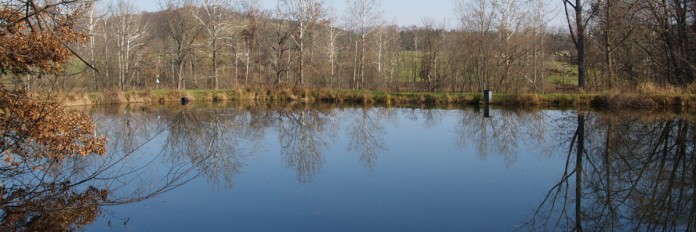MARSHFIELD, Mo. — A pond can be a valuable asset to a farm or suburban landowner according to Bob Schultheis, a natural resource engineering specialist with University of Missouri Extension.
“A well-planned and built pond can provide livestock water, fishing opportunities, soil erosion control, fire protection, and a nice place to relax,” said Schultheis.
Cost
“But a good, usable pond is not inexpensive to build. Depending on the geology of the site, a half-acre pond could cost between $11,000 and $15,000.”
According to Schultheis, undersized and leaky ponds are the two most common problems he encounters.
“A properly-sized farm pond will have one acre of surface area for each 10-15 acres of watershed that drains into it and be at least 8-feet deep.
“Cutting corners on size to save money only ends up costing more later in repairing erosion damage and downstream neighbor relations, and in dealing with aquatic weed problems,” said Schultheis.
Leaks
Leaky ponds are frequently due to the wrong soil being used for sealing or because the right soil was improperly compacted.
When building or enlarging a pond in the Ozarks, Schultheis said to be sure to do it when the soil is moist and sticky, never when the soil is dry.
“Many of the red and yellow clay soils in the Ozarks are quite leaky in their natural state. Pulverizing these soils with a disk breaks down their blocky soil structure and keeping them moist during the recompaction process and after construction will help the pond better hold water,” said Schultheis.
Compaction of several 4 to 6-inch thick layers of moist clay in the pond bottom will usually be needed to assure a seal.
Additives such as bentonite clay or soda ash may need to be mixed with some soils to keep them from leaking.
“Don’t expect a bulldozer to do good soil compaction,” said Schultheis.
Bulldozers have a large “footprint” that spreads out their weight, resulting in ground pressure of 7-13 psi, which is no greater than a person just standing on the ground.
A better choice is a wheel tractor and disk (15-45 psi ground pressure), or a sheepsfoot roller (300+ psi ground pressure), to compact each clay layer before adding the next one.
“A well-built pond should fill within one year, and seepage plus evaporation should be 12 inches or less in hot summer months and 4 inches or less in winter months,” said Schultheis.












